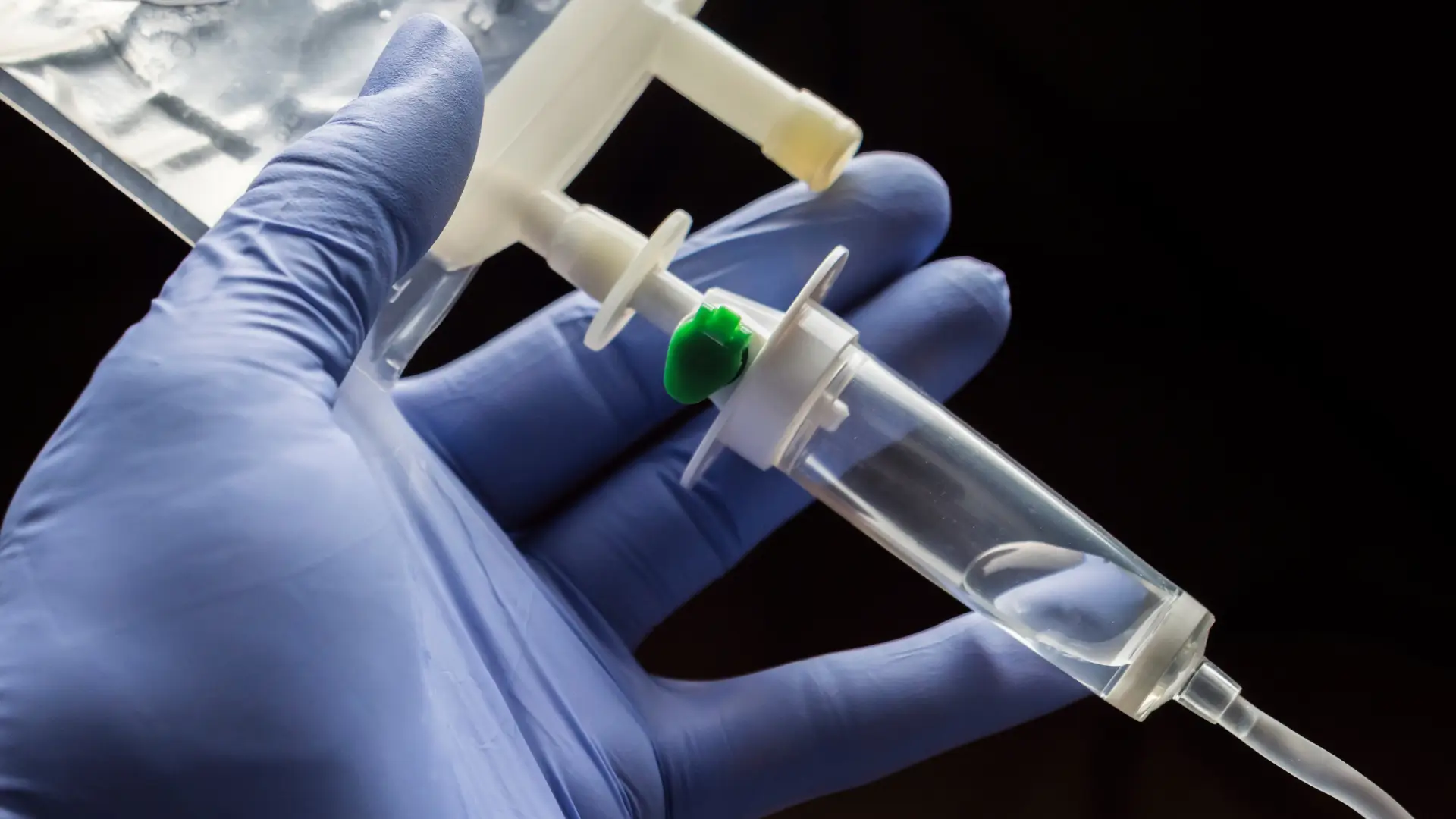Systemic lupus erythematosus (SLE) is a chronic autoimmune disease that affects millions globally, with recent estimates indicating about 3.41 million people living with the condition. This disease, which causes significant morbidity and impacts quality of life, poses a continuous challenge to both patients and healthcare providers.
In response to this pressing global health concern, innovative therapies are emerging to help manage SLE more effectively. One such breakthrough is Anifrolumab, branded as Saphnelo. This human monoclonal antibody works by targeting and inhibiting type I interferon signalling, a central pathway involved in the immunopathogenesis of SLE. While clinical trials have highlighted its potential in reducing disease activity, it is crucial to understand its mechanism of action and safety profile before widespread use.
This article delves into the science behind Saphnelo, outlining its approved indications, administration guidelines, and providing essential insights for clinicians and patients to navigate its use effectively.
Key Takeaways
- Saphnelo (anifrolumab) is a human monoclonal antibody that targets and inhibits type I interferon receptor (IFNAR-1). This prevents inflammatory signaling involved in systemic lupus erythematosus (SLE).
- The drug rebalances both innate and adaptive immunity, reducing pro-inflammatory cytokines, restoring lymphocyte subsets, and inhibiting plasmacytoid dendritic cells. This helps decrease disease activity and lupus flares.
- Saphnelo is approved for adults with moderate to severe SLE in combination with standard therapies. However, it is not recommended for people with severe active lupus nephritis or central nervous system lupus.
- Clinical trials, particularly the TULIP-2 trial, demonstrated that Saphnelo significantly improves BICLA response and reduces corticosteroid use. Over 72% of patients decreased their oral corticosteroid dose by Week 52.
- The administration of Saphnelo requires careful preparation, dilution, and infusion protocols to ensure safety and efficacy, with appropriate screening for infections and contraindications.
- Saphnelo’s unique mechanism of action, compared to other lupus biologics, makes it an excellent option for people with high interferon gene signatures or those who have not responded to previous biologic treatments.
- Long-term studies show durable remission rates, reinforcing Saphnelo’s role in lupus management and highlighting its potential for sustained therapeutic benefit.
About: Medica Depot is your trusted all-in-one supplier, offering a range of high-quality medical injectables and supplies. Buy Saphnelo online at Medica Depot today! Whether for health professionals, plastic surgeons, dermatologists, licensed estheticians, or other specialists, we can offer genuine, brand-name products you may need. With Medica Depot, we prioritize serving you better to improve the patient’s quality of life.
Pharmacology: How Saphnelo Works as Anifrolumab (IFNAR‑1 blockade)

Saphnelo, or its generic name anifrolumab, is a human monoclonal antibody that binds with high affinity to the type I interferon receptor subunit 1 (IFNAR1). This binding effectively blocks type I interferon signaling, preventing inflammatory signals that contribute to the autoimmune response.
Once bound, anifrolumab pulls IFNAR1 into the cell, reducing the number of surface receptors and turning off the JAK–STAT pathway that activates genes driving autoimmune damage. In pivotal clinical trials, Saphnelo infusions (anifrolumab) significantly lowered the interferon gene signature in people with moderate to severe systemic lupus erythematosus (SLE).
The drug also rebalances both innate and adaptive immunity, reducing levels of pro-inflammatory cytokines, restoring normal lymphocyte subsets, and inhibiting the activation of plasmacytoid dendritic cells. These pharmacodynamic effects translate into decreased disease activity and fewer lupus flares, improving overall disease management.
It belongs to a new class of biologic drugs designed to target immune dysregulation in systemic lupus erythematosus. Furthermore, its effects translate into clinically meaningful improvements in symptoms of lupus and quality of life.
Saphnelo Indications & Clinical Evidence from TULIP Trials

Saphnelo (anifrolumab-fnia) is approved to treat adults with moderate to severe systemic lupus erythematosus (SLE), in combination with standard therapies such as oral corticosteroids, antimalarials, or immunosuppressants. The US Food and Drug Administration has approved Saphnelo for patients on stable background therapy. However, it is not recommended for those with severe active lupus nephritis or central nervous system lupus.
The TULIP clinical trials provide strong evidence supporting the efficacy and safety of Saphnelo for the intended patient population. In the TULIP-2 trial, a significantly higher BICLA response was observed in people receiving Saphnelo and standard therapy (ST) compared to those receiving ST alone. This data highlights Saphnelo’s ability to effectively control and lower disease activity.
Additionally, the TULIP-2 trial demonstrated that Saphnelo had early and sustained effects. More people who received Saphnelo with ST achieved a better BICLA response through Week 52 compared to those who received ST alone.
Finally, Saphnelo was shown to be effective in reducing steroid use. In the TULIP-2 trial, 72% of patients reduced their oral corticosteroid (OCS) dose from ≥10 mg/day to ≤7.5 mg/day, demonstrating Saphnelo’s steroid-sparing benefit.
These outcomes are particularly important for lupus patients who face long-term steroid side effects. The TULIP clinical trials (TULIP-1 and TULIP-2) demonstrated that Saphnelo works effectively in combination with standard lupus medicines. Moreover, these trials highlight both the efficacy and safety profile of Saphnelo.
Saphnelo Administration, Patient Eligibility & Safety Notes

People should seek guidance from licensed medical professionals who are experienced in administering Saphnelo infusions. Following the official prescribing information is crucial to ensuring safe and effective treatment.
For the administration protocol, a healthcare doctor must adhere to the following steps to ensure Saphnelo safety and maximize treatment effects:
- Preparation: Examine the 2 mL vial visually to confirm that the solution is clear to opalescent and free of particles. Discard any vial with cloudiness or debris.
- Dilution: Using aseptic technique, withdraw the entire 2 mL (300 mg) volume. They should add it to a 50 mL or 100 mL bag of 0.9% sodium chloride solution. Gently invert the bag to mix, but avoid shaking.
- Infusion: Attach a sterile, low-protein-binding 0.2–0.22 µm in-line filter to the IV line. Infuse the diluted solution and the recommended Saphnelo dosing of 300 mg over 30 minutes.
- Line Flush: After the infusion ends, flush the line with 25 mL of 0.9% sodium chloride to ensure the full dose reaches the patient.
Lupus Patient Suitability
Furthermore, healthcare providers should ensure patient suitability and eligibility for Saphnelo treatment to avoid complications during long-term medication therapy.
- Indication: Only adult patients, aged 18 years and above, with moderate to severe systemic lupus erythematosus on stable background therapy, are eligible for Saphnelo treatment. Pre-infusion assessment should review comorbidities, confirm up-to-date immunizations, and verify no active or recurrent infections.
- Contraindications: Avoid administering Saphnelo in people with severe active lupus nephritis or CNS lupus. It also includes those with untreated active infections or anyone under 18 years.
- If a lupus patient misses a scheduled infusion, providers should administer it as soon as possible, while maintaining a minimum of 14 days between doses.
- Infection Screening: Ensure screening for active or recurring infections before administration. Avoid live or live-attenuated vaccines during therapy.
- Patient Education: Patients should be educated on how Saphnelo works and on recognizing signs of severe infection (e.g., fever, cough, chills). This also includes hypersensitivity symptoms (e.g., rash, swelling, breathing difficulty), and practitioners instruct patients to report side effects immediately.
When used correctly, Saphnelo infusions complement other lupus medicines, helping patients better control symptoms, reduce steroid reliance, and improve long-term health outcomes.
Position vs Other Systemic Lupus Biologics & Emerging Data
Saphnelo stands out by blocking the type I interferon receptor (IFNAR-1), while BLyS inhibitors like Benlysta and anti-CD20 agents target B-cell survival. Unlike B-cell-focused treatments, Saphnelo modulates both innate and adaptive immunity by halting interferon signaling.
This distinct mechanism makes Saphnelo an excellent option for patients with high interferon gene signatures or those who have not responded to previous biologic treatments. Pooled analyses from the Phase III TULIP-1 and TULIP-2 trials demonstrate that Saphnelo consistently delivers BICLA responses, regardless of disease duration or prior biologic use.
Post-hoc analyses reveal that over 50% of patients reduced their daily corticosteroid dose to ≤7.5 mg by Week 52. This emphasizes the steroid-sparing benefits. Long-term extension studies also report durable remission rates over four years, reinforcing Saphnelo’s growing role in lupus management.
Conclusion
Saphnelo, or anifrolumab, represents a significant advancement in the treatment of systemic lupus erythematosus (SLE). By inhibiting type I interferon signaling, it effectively reduces disease activity and minimizes the need for corticosteroids in patients. Clinical trials have shown promising results, further establishing its role in managing moderate to severe SLE alongside standard therapies.
Healthcare providers play a vital role in ensuring the safe and effective administration of Saphnelo. Thorough patient assessments, adherence to administration protocols, and awareness of contraindications help minimize risks and maximize therapeutic benefits. With proper guidance, Saphnelo can enhance the quality of life for those living with SLE.
FAQs
1. What is Saphnelo used for?
Saphnelo, also known as anifrolumab, is a treatment for adults with moderate to severe systemic lupus erythematosus in conjunction with standard therapies.
2. How does Saphnelo work for lupus?
If a dose is missed, lupus patients should receive the infusion as soon as possible, ensuring at least a 14-day gap before the next dose to prevent overlapping doses.
3. What are the key safety considerations when administering Saphnelo?
Healthcare providers must screen for contraindications, such as severe active lupus nephritis or untreated infections, and follow proper administration protocols to ensure patient safety and treatment effectiveness.
References
- Amofah AD, Apaflo JN, Misszento JA. Developing strategies to enhance patient adherence to prescribed treatment regimens. International Journal of Science and Research Archive. 2024;13(2):1440-1446. doi:https://doi.org/10.30574/ijsra.2024.13.2.2199
- STRAIGHTFORWARD DOSING AND ADMINISTRATION. Saphnelohcp.com. Accessed June 20, 2025. https://www.saphnelohcp.com/dosing-administration.html









